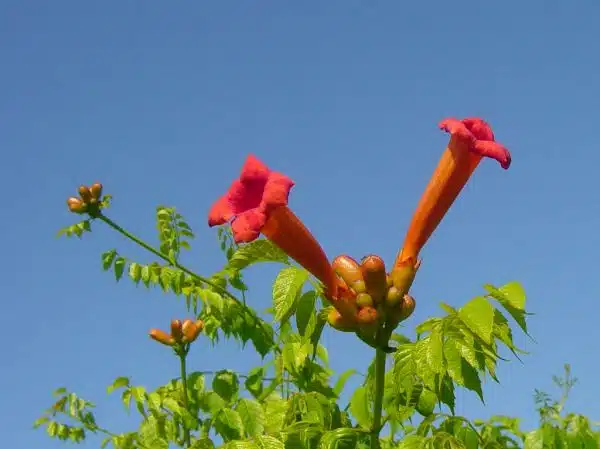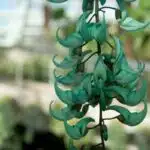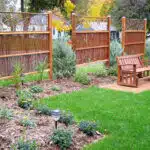Flowering vines are a popular addition to any garden or landscape design, providing a colorful and dynamic element that can enhance the overall aesthetic. There is a wide range of flowering vine types, each with unique characteristics and uses. Understanding how to select and use these plants can help you create a stunning and functional outdoor space.
When considering flowering vines for your garden, it is important to take into account factors such as growth habits, bloom time, and care requirements. Some vines require trellises or supports to climb while others can be planted as ground covers. Additionally, choosing the right vine for your climate and soil type is crucial for ensuring healthy growth and maximum blooms. In this article, we will explore some of the most popular flowering vine types and how to incorporate them into your garden design.
Climbing Vines Vs. Ground Cover Vines
The world of flowering vines is a captivating one, with endless possibilities for adding color and texture to any garden or landscape. When considering the use of vines, one must choose between climbing and trailing varieties, each with its own set of advantages and disadvantages. Climbing vines are those that require support structures and can grow upward towards the sky, while trailing vines tend to spread out horizontally along the ground.
Climbing vines are an excellent choice for covering vertical surfaces such as walls, fences, and trellises. They provide a striking visual impact and can create a sense of height in smaller spaces. However, they require regular maintenance to keep them from becoming too overwhelming or invasive. In addition, they may not be suitable for all types of support structures, as some may need more substantial anchoring than others.
On the other hand, ground cover vines can provide a lush carpet-like effect that adds depth and interest to any landscape. They require less maintenance than their climbing counterparts since they do not need pruning or training. However, they may not be as showy or eye-catching as climbing vines and may take longer to establish themselves fully. Additionally, some ground cover vines can become invasive if left unchecked, so it’s essential to choose the right type for your specific needs.
When considering which type of vine to use in your garden or landscape design project, it’s crucial to weigh the pros and cons carefully before making a decision. Both climbing and ground cover varieties have unique features that make them ideal for different uses and situations. Keep in mind that there are no hard-and-fast rules when it comes to using flowering vines – experimentation is key! In the next section, we will delve into annual vs. perennial flowering vines – another important consideration when choosing the right plant for your project.
Annual Vs. Perennial Flowering Vines
Perennial vs. Annual Flowering Vines
Flowering vines are a beautiful addition to any garden, but it’s important to choose the right type of vine for your needs and preferences. One of the most significant distinctions in flowering vines is between annual and perennial varieties. Annual flowering vines complete their life cycle in one growing season, while perennial varieties come back year after year.
Perennial flowering vines offer several benefits over annuals. For one thing, they require less maintenance since they don’t need to be replanted every year. Additionally, since they have deeper roots than annuals, perennials tend to be more drought-resistant and better able to withstand extreme weather conditions. However, there are also some drawbacks to consider when choosing perennials. They may take longer to establish themselves than annuals, so you’ll need to be patient as you wait for them to grow. Additionally, some varieties of perennial flowering vines can become invasive if not properly controlled.
On the other hand, annual flowering vines offer different advantages and disadvantages from perennials. Since they grow quickly and bloom abundantly in their first year of growth, they’re an excellent choice if you want an immediate impact in your garden or want a quick solution for covering an unsightly area. Annuals also come in a wider range of colors and sizes compared to perennials. However, because they die at the end of each growing season, annuals require more maintenance and replanting than perennials do.
- When considering which type of vine is best suited for your garden needs, think about how much time you’re willing to invest in maintenance.
- If you’re looking for a low-maintenance option that will last for several years without needing replanting or excessive pruning, then a perennial vine might be the best choice.
- On the other hand, if you prefer something that will grow quickly and bloom abundantly during its first year, an annual flowering vine is a better option.
- Keep in mind that with either option, you’ll need to provide adequate support for your vines to grow and thrive.
- This could include installing a trellis or other structure that will help the vine climb and spread.
- You might also need to prune your vines regularly to keep them from becoming too tangled or overgrown.
In selecting between perennial and annual flowering vines, there are benefits and drawbacks of each. While perennials offer low maintenance and drought-resistant features, they may take longer to establish themselves and can be invasive if not properly controlled. Meanwhile, annuals provide quick growth and a variety of colors but require more replanting and pruning. Understanding these differences can help you choose the best option for your garden needs. In the next section, we’ll explore another aspect of flowering vines: shade-loving varieties.
Shade-Loving Flowering Vines
Trumpet Creeper (Campsis radicans) is a vigorous, deciduous, climbing vine that is native to the southeastern United States. It is widely grown for its bright orange-red trumpet-shaped flowers which bloom from late spring to late summer. Morning Glories (Ipomoea spp.) are a large group of flowering vines that produce funnel-shaped flowers in shades of blue, purple, red, and white. They can be grown in full sun or light shade and are well-suited for covering walls, fences, and trellises. Dutchman’s Pipe (Aristolochia durior) is a fast-growing, woody vine that is native to the central and eastern United States. It produces large, yellowish-green flowers with a curved shape that is reminiscent of a Dutchman’s pipe. These flowers bloom from mid-summer to early fall and the vine can be used to cover arbors and pergolas.
Trumpet Creeper
Shade-loving flowering vines are a great addition to any garden, and one of the most popular choices is the trumpet creeper. This vine species, scientifically known as Campsis radicans, is native to the southeastern region of the United States but has also been naturalized in other parts of North America. The trumpet creeper is a vigorous climber that can grow up to 30 feet tall and spread up to 15 feet wide.
The trumpet creeper’s unique trumpet-shaped flowers are one of its most attractive features. These vibrant red-orange blooms attract hummingbirds, making it an excellent choice for those who want to create a wildlife-friendly garden. However, it’s worth noting that this plant can also be invasive in some regions, so make sure to check with your local extension office before planting it in your garden.
To use trumpet creepers effectively in your garden, you should provide them with a sturdy trellis or support system to climb on. These vines prefer moist, well-drained soil and will thrive in partial shade or full sun. They are relatively low-maintenance but may require pruning to keep them from taking over other plants in your garden. With proper care and attention, the trumpet creeper can add charm and beauty to any outdoor space while attracting hummingbirds with its unique blooms.
Morning Glories
Shade-loving flowering vines are a popular choice for those who want to add beauty and interest to their garden. One of the most well-known options is the trumpet creeper, which boasts vibrant red-orange flowers that attract hummingbirds. However, there are other shade-loving flowering vines worth exploring, such as morning glories.
Morning glories are a group of flowering vines that belong to the Convolvulaceae family. These plants are native to tropical and subtropical regions around the world and have been cultivated for centuries for their beautiful blooms. Morning glories can grow up to 15 feet tall and produce large, trumpet-shaped flowers in shades of blue, purple, pink, white, and red.
Growing morning glories is relatively easy as they prefer moist, well-drained soil and full sun exposure. They can be grown on a trellis or support system and will quickly climb upwards with their twining stems. There are many unique varieties of morning glories available today, including dwarf cultivars that are perfect for container gardens or small spaces. With proper growing techniques, morning glories can add a pop of color and charm to any garden setting.
Dutchman’s Pipe
Shade-loving flowering vines are a popular choice for garden enthusiasts who want to add visual interest and beauty to their outdoor spaces. Among the most well-known options is the trumpet creeper, but there are other varieties worth exploring. One such option is the Dutchman’s pipe, which features unique flowers that attract pollinators.
Dutchman’s pipe belongs to the Aristolochiaceae family and is native to North America. It gets its name from the shape of its flowers, which resemble a curved pipe with a flared bowl. The plant produces large leaves that are perfect for providing shade in gardens and other outdoor spaces. Dutchman’s pipe is also known for attracting pollinators such as butterflies, bees, and hummingbirds.
One of the most interesting aspects of Dutchman’s pipe is its unique flower shape. The flowers are typically dark brown or maroon in color and have a distinctive curved shape that gives them their common name. They also emit an odor that attracts their preferred pollinators. With proper care and attention, Dutchman’s pipe can be an excellent addition to any shade garden or landscape design project.
Sun-Loving Flowering Vines
Sun-loving flowering vines are a great addition to any garden or landscape. They add a pop of color and can be used in a variety of ways. Some popular uses include climbing up trellises or fences, covering walls or buildings, or even as ground cover. When choosing a sun-loving flowering vine, it’s important to consider the growing conditions, such as soil type and amount of sunlight needed.
Growing tips for sun-loving flowering vines vary depending on the specific type of plant. However, some general tips include providing adequate support for climbing vines, regular pruning to encourage growth and prevent overcrowding, and consistent watering to prevent drought stress. It’s also important to fertilize regularly with balanced fertilizer to promote healthy growth and vibrant blooms.
Some of the best varieties of sun-loving flowering vines include clematis, morning glory, and honeysuckle. Clematis comes in a variety of colors and can bloom from spring through fall. Morning glory is known for its stunning blue flowers that open in the morning and close at night. Honeysuckle is another great option with its fragrant flowers attracting pollinators such as hummingbirds and butterflies.
Transition: Now that we’ve covered some great options for sun-loving flowering vines, let’s take a look at fast-growing varieties that can quickly fill in spaces in your garden or landscape.
Fast-Growing Flowering Vines
As the sunlight fades and the evening sets in, the vibrant colors of sun-loving flowering vines begin to dim. But don’t let that discourage your love for these nature’s beauties. There are other varieties of flowering vines that can be used to add privacy and vertical gardening to your landscape.
Flowering vine varieties for privacy are perfect for creating a natural fence or enclosure around your property. Some examples include American bittersweet, which grows up to 20 feet tall and produces bright orange berries in the fall; Carolina Jessamine, which is evergreen and has fragrant yellow flowers; and climbing hydrangea which produces large white blooms in early summer.
Using fast-growing vines for vertical gardening is another way to incorporate floral beauty into your landscape. These types of vines grow quickly and can create a lush green wall in just one season. Some options include trumpet vine, which produces large clusters of red-orange flowers; black-eyed Susan vine with its cheery yellow and white blooms; and clematis which comes in a variety of colors from deep purple to soft pink.
With these options available, you can easily add both privacy and vertical interest to your garden with ease. In the next section, we will take a look at slow-growing flowering vines that can still add beauty to your landscape without overtaking it.
Slow-Growing Flowering Vines
Slow-Growing Flowering Vines are perfect for those who want to add some color and texture to their garden without having to worry too much about maintenance. These vines grow at a slower pace than other varieties, which means they will not take over your garden or require constant pruning. Additionally, slow-growing flowering vines offer an added benefit of being long-lived, making them a great investment for any gardener.
Benefits of slow-growing flowering vines include their ability to be trained and shaped into various forms. This allows you to get creative with your garden design and incorporate these vines into your landscaping in unique ways. For instance, slow-growing flowering vines can be trained to climb up trellises, fences, or walls, creating a stunning vertical display. They can also be used as ground covers or incorporated into container gardens.
Creative ways to incorporate slow-growing vines into garden designs include planting them around seating areas or outdoor living spaces such as patios or decks. This adds a natural element to the space and creates a relaxing atmosphere for you and your guests. You may also consider using them as borders along walkways or paths, providing an attractive barrier while adding beauty and color along the way.
Transition: Fragrant flowering vines offer another way to add sensory appeal to your garden design. Let us explore some popular varieties in the subsequent section.
Fragrant Flowering Vines
Slow-growing flowering vines are a great option for those who are willing to wait for their garden to flourish. However, if you want immediate results with an added bonus of a sweet fragrance, fragrant climbing vines might be the perfect fit for you. Fragrant vines are not only visually appealing but also provide a pleasant aroma that can enhance your outdoor experience.
When it comes to choosing the best locations for fragrant vines, it is essential to consider factors such as sunlight exposure and soil type. Most fragrant vines require full sun or partial shade and well-draining soil. Some popular options include jasmine, honeysuckle, and wisteria, which thrive in these conditions and can fill your garden with delightful scents.
Adding fragrant climbing vines to your garden is an excellent way to create an inviting atmosphere for guests or simply enjoy a peaceful retreat. With so many varieties available in the market, you can choose from different colors and scents according to your preference. Whether you’re looking for something subtle or robust, there’s a perfect fragrant vine out there waiting for you.
As we move forward into exploring more options for flowering vines, it’s important to consider non-invasive varieties that won’t take over your entire garden. These types of vines can be just as beautiful and beneficial without causing any harm to surrounding plants or structures. Let’s delve into some of the best non-invasive flowering vine options in our next section.
Non-Invasive Flowering Vines
When it comes to vertical gardening and creative landscaping, non-invasive flowering vines are an excellent choice. These plants grow vertically and can cover unsightly walls or fences, adding a touch of color and beauty to any outdoor space. Unlike invasive vines that can take over your garden and cause damage, non-invasive varieties stay in their designated area and don’t spread uncontrollably.
One popular non-invasive flowering vine is the Clematis. This plant produces large, showy flowers in a variety of colors including white, pink, purple, red, and blue. They are easy to care for and can be trained to climb trellises or arbors. Another great option is the Honeysuckle vine which also produces fragrant flowers that attract hummingbirds and butterflies. Both of these vines make perfect additions to any garden or landscape design.
Overall, incorporating non-invasive flowering vines into your outdoor space is an excellent way to add interest and beauty without worrying about them taking over your garden. With proper care and support structures, these plants will thrive and provide you with years of enjoyment. In the subsequent section, we will discuss native flowering vines that are perfect for sustainable landscaping practices.
Native Flowering Vines
As we delve further into the world of flowering vines, it’s important to consider the benefits of using native plants in landscaping. Native flowering vines are those that are naturally found in a particular region or ecosystem, and they offer several advantages over non-native varieties. First and foremost, they’re better adapted to local conditions and require less maintenance than their exotic counterparts. Additionally, they provide habitat and food for local wildlife, which can help promote biodiversity.
When it comes to choosing native flowering vines for your landscape, there are plenty of options to consider. Some popular choices include trumpet vine, Carolina jessamine, Virginia creeper, and crossvine. Each of these species has its own unique characteristics and growing requirements, so it’s important to do your research before making a selection.
Overall, incorporating native flowering vines into your landscape is a great way to support the local ecosystem while adding beauty and interest to your outdoor space. In the next section, we’ll explore another type of flowering vine that offers both aesthetic appeal and culinary benefits: edible flowering vines.
Edible Flowering Vines
- Edible flowering vines are a great way to add a decorative and flavorful punch to your garden.
- Popular edible varieties include passionfruit, kiwi, and hop vines.
- When planting, be sure to choose an appropriate location with adequate sunlight and soil that drains well.
- Support structures such as trellises or arbors are recommended to help promote healthy growth.
- Harvesting techniques vary depending on the variety, but generally speaking, fruits can be harvested when they reach peak ripeness.
- Some flowering vines can be eaten raw, while others may require further preparation before consumption.
Edible Varieties
Growing edible flowering vines is a great way to add both beauty and flavor to your garden. Many varieties of flowering vines produce edible flowers or fruits that can be used in a variety of recipes. Some popular edible varieties include passionfruit, honeysuckle, and jasmine.
Passionfruit is a tropical vine that produces fragrant flowers and delicious fruit. Growing tips include providing the plant with plenty of sun, well-draining soil, and regular watering. The fruit can be used in a variety of recipes such as juices, desserts, and cocktails. The flowers can also be eaten raw or used as a garnish.
Honeysuckle and jasmine are both sweet-smelling vines that produce edible flowers. Growing tips for these plants include providing them with partial shade and moist soil. The flowers can be used in teas, syrups, or as a decoration on cakes or pastries. Incorporating these edible flowering vines into your garden not only adds visual interest but also provides unique flavors to your culinary creations.
Planting Tips
Planting edible flowering vines in your garden can be a delightful way to add beauty and flavor to your outdoor space. However, planting techniques and growth strategies are essential to ensure that these plants thrive. Before planting, it is important to consider the type of soil, sunlight exposure, and water requirements for each variety.
One fundamental technique for planting edible flowering vines is choosing the right location. Most varieties thrive in full sun or partial shade with well-draining soil. It is also crucial to provide sufficient support for the vines to grow upon, especially if they are heavy fruit-bearers. Vertical trellises or horizontal wires are popular options that allow the plant’s tendrils to climb and spread out.
Another strategy for growing edible flowering vines successfully is proper watering and fertilization. These plants require consistent moisture during their growing season but also need good drainage to prevent root rot. A regular feeding schedule using organic fertilizers can enhance plant growth and increase yields while reducing pest infestations.
In conclusion, incorporating edible flowering vines into your garden can offer both aesthetic appeal and culinary possibilities. By following essential planting techniques and growth strategies such as selecting appropriate locations, providing structural support, consistent watering and fertilization, gardeners can enjoy an abundance of flavorful blooms and fruits throughout the growing season.
Harvesting Techniques
As a horticulture writer, it is essential to discuss the harvesting techniques for edible flowering vines. Pruning is an important technique that helps maintain the plant’s shape and encourages healthy growth. It involves removing dead or diseased branches, as well as new growth that may be hindering the plant’s productivity. Pruning should be done during the dormant season, usually in late winter or early spring, before new growth begins.
When it comes to harvesting edible flowering vines, timing is key. Different varieties have different harvesting schedules, so it is important to research and understand each one’s specific requirements. Generally, fruits should be picked when they are fully ripe but still firm to the touch. Waiting too long to harvest can result in overripe fruit that loses its flavor and texture.
Drying is another method of preserving edible flowers from these plants. This process involves removing moisture from the flowers by hanging them upside down in a dry, dark place with good air circulation. Dried flowers can then be used as a flavorful addition to teas or other recipes. Harvesting and drying techniques are crucial in maximizing the yield of your garden’s edible flowering vines and getting the most out of your investment.
Low Maintenance Flowering Vines
Edible flowering vines add a unique touch to any garden or landscape. However, for those who prefer low-maintenance options, there are plenty of easy-care options available. These vines require minimal attention while still providing beautiful blooms throughout the growing season.
One of the best options for small spaces is the clematis vine. This plant produces stunning flowers in a variety of colors and can grow up to 20 feet tall on a trellis or support system. Another great option is the honeysuckle vine, which has fragrant flowers that attract hummingbirds and butterflies. Both of these plants are relatively easy to care for and can thrive in a variety of conditions.
For those looking for even easier care options, consider the black-eyed Susan vine or morning glory vine. These plants require very little maintenance and can be grown in pots or hanging baskets, making them perfect for small spaces such as balconies or patios. With these easy-care options, anyone can enjoy the beauty of flowering vines without spending hours tending to their garden.
As gardeners know, trellises and supports are essential components when growing flowering vines. In the next section, we will discuss different types of supports that you can use to help your vines thrive and reach their full potential. By providing proper support, you can ensure that your flowering vines not only look beautiful but also stay healthy throughout the growing season.
Trellises And Supports For Flowering Vines
While flowering vines are a beautiful addition to any garden, they can quickly become unruly and take over other plants if not properly supported. Trellises and supports are essential for keeping these plants under control while also showcasing their beauty. One common objection to using trellises is that they can be costly, but there are many creative DIY trellis ideas that are both affordable and aesthetically pleasing.
Vertical gardening is an increasingly popular trend, especially in urban areas where space is limited. Trellises and supports provide the perfect structure for vertical gardening with flowering vines. By growing these plants vertically, gardeners can maximize their growing space while also adding a stunning visual element to their outdoor space. Some popular flowering vine types for vertical gardening include clematis, sweet peas, and morning glories.
When choosing a trellis or support for your flowering vines, consider the weight of the plant and how much support it will need as it grows. For lighter plants like sweet peas or morning glories, a simple bamboo or wire trellis may suffice. However, heavier plants like clematis will require sturdier supports such as metal frames or wooden lattices. No matter what type of trellis you choose, make sure it is securely anchored to prevent damage from wind or other weather conditions.
As important as proper support is for your flowering vines, soil and climate considerations are equally crucial for their success. In the next section, we will explore how different soil types and climates can affect the growth of these beautiful plants. By understanding these factors and implementing proper support structures, you can ensure healthy growth and stunning blooms from your flowering vines year after year.
Soil And Climate Considerations For Flowering Vines
After establishing a proper trellis or support system for your flowering vines, it’s important to consider the soil and climate conditions necessary for their growth. One of the most important factors to consider is the pH level of your soil. Different types of flowering vines thrive in specific pH levels, so it’s crucial to test your soil’s acidity before planting. For example, clematis varieties prefer a more alkaline soil with a pH between 6.5-7.0, while wisteria prefers a slightly more acidic soil with a pH between 5.5-6.5.
Another significant factor to consider is moisture requirements. Some flowering vines prefer moist soils, while others can withstand drier conditions. Be sure to research the specific needs of your chosen vine before planting and adjust your watering schedule accordingly. Additionally, climate plays an important role in the success of your vine growth. For example, passionflower thrives in hot and humid climates with plenty of rainfall, whereas trumpet vine prefers hot and dry climates.
In order to maximize the health and beauty of your flowering vines, it’s essential to provide them with optimal growing conditions tailored to their unique needs. By testing your soil’s pH levels and adjusting moisture levels accordingly, you can ensure that your vines will grow strong and produce vibrant blooms year after year. With proper care and attention paid to both trellising/supporting and environmental factors, you’ll be rewarded with a stunning display of natural beauty in your garden.
As we continue our exploration into the world of flowering vines, we’ll now turn our attention towards companion planting strategies that can enhance the growth potential and aesthetic appeal of these beautiful plants even further. By carefully selecting complementary plant species that share similar growing conditions as your chosen vines, you can create a lush garden oasis that will delight all who visit or pass by.
Companion Planting With Flowering Vines
Companion planting with flowering vines can provide many benefits, such as natural pest control, improved soil structure, and improved pollination. When selecting companion plants, it is important to consider the planting requirements of each plant, such as sunlight, water and soil pH. Additionally, the growth rate and size of each plant should be considered in order to ensure they do not become too invasive. Lastly, the flowering period and bloom color of each plant is important to consider when choosing a flowering companion vine.
Benefits Of Companion Planting
When it comes to cultivating a beautiful and productive garden, companion planting can be an incredibly effective technique. By pairing certain plants together, you can help them thrive and maximize their potential. One of the best candidates for companion planting is flowering vines. These versatile plants not only add beauty to your garden but can also provide a range of benefits to other plants around them.
One of the key benefits of companion planting with flowering vines is that they can help attract beneficial insects to your garden. Bees, butterflies, and other pollinators are essential for plant reproduction, and many flowering vines produce nectar-rich blooms that these insects love. Additionally, some vine species have been shown to repel harmful pests such as aphids and spider mites, providing natural pest control without the need for harmful chemicals.
To ensure successful pairings with flowering vines in your garden, there are a few tips to keep in mind. First, choose your vine species carefully based on the needs of the other plants in your garden. Some vines prefer full sun while others do best in partial shade or cooler temperatures. Additionally, consider the growth habits of each plant and make sure they won’t compete for resources like water and nutrients. With careful planning and attention to detail, you can create a beautiful and thriving garden filled with all sorts of different companions.
By taking advantage of the many benefits of companion planting with flowering vines, you can create a healthy and vibrant environment for all your plants to grow. Whether you’re looking to attract pollinators or control pests naturally, these versatile vines are an excellent addition to any garden. With careful planning and thoughtful pairings, you can create a mutually beneficial ecosystem where every plant thrives together.
Planting Requirements For Companion Plants
Companion planting is an age-old technique that has been used to improve the health and productivity of gardens. When it comes to companion planting with flowering vines, it is essential to consider the planting requirements of each plant species carefully. The soil type, pH level, and sunlight exposure are some of the critical factors that must be taken into account when selecting companion plant pairings.
Soil preparation techniques play a crucial role in creating a healthy growing environment for your plants. Before planting any seeds, it is important to prepare the soil by removing weeds and amending it with compost or other organic matter. This will help provide essential nutrients to your plants and improve water retention in the soil. Additionally, adding mulch around your plants can help regulate soil temperature while reducing weed growth.
When selecting companion plant pairings, it is important to choose plants that have similar soil requirements. For example, if you plan on pairing flowering vines with vegetables like tomatoes or peppers, make sure both types of plants prefer similar soil conditions. By doing so, you can create a mutually beneficial ecosystem where each plant thrives together. With careful planning and attention to detail, you can create a beautiful and productive garden filled with all sorts of different companions.
Adding Color And Texture To Garden Designs With Flowering Vines
Flowering vines are a great addition to any garden design. They can add color and texture while also serving practical purposes, such as providing privacy screens or growing in vertical gardens. When selecting flowering vines for your garden, it is important to consider their growth habits and the specific needs of your space.
For vertical gardens, there are several types of flowering vines that work well. These include climbing roses, clematis, morning glories, and sweet peas. These vines can be trained to grow up trellises or walls, adding height and interest to your garden design. It is important to ensure that the structure supporting the vine is strong enough to handle its weight and growth habit.
Using flowering vines for privacy screens is another practical application for these plants. Some great options for this purpose include wisteria, trumpet vine, and honeysuckle. These plants can quickly cover fences or trellises and provide a natural barrier between your outdoor space and neighbors or busy streets. It is important to choose a vine with the right growth habit for your specific needs to ensure it provides adequate coverage and privacy.
Incorporating flowering vines into your garden design can add both beauty and function. Whether you are looking for a way to add height to a vertical garden or create a natural privacy screen with climbing plants, there are many options available. Consider the specific needs of your space when selecting flowering vines and be sure to properly train and support them as they grow.
Conclusion
Flowering vines are a wonderful addition to any garden, providing color, texture, and interest. When choosing which type of vine to use in the garden, it’s important to consider factors such as sun exposure, soil conditions, and support structures. Climbing vines can add height and vertical interest to a garden, while ground cover vines can provide lush greenery and fill in gaps between other plants.
Annual flowering vines such as morning glories and sweet peas are perfect for adding seasonal color to the garden, while perennial vines like wisteria and clematis offer long-term beauty year after year. Shade-loving vines like hydrangea and ivy can be used to brighten up darker areas of the garden, while sun-loving varieties like trumpet vine and honeysuckle thrive in full sunlight.
No matter which type of flowering vine you choose for your garden, be sure to provide proper support structures such as trellises or arbors. Additionally, ensure that the soil conditions are suitable for your chosen plant species and that they receive adequate water and nutrients. Companion planting with other flowers or vegetables can also help enhance the overall beauty of your garden.
In conclusion, incorporating flowering vines into your garden design can add unique texture and color to any outdoor space. Whether you prefer climbing or ground cover varieties, annuals or perennials, shade-loving or sun-loving plants – there is a perfect flowering vine out there for every gardener. With proper care and attention to detail, these beautiful plants will flourish for years to come. So go ahead – plant that vine today and watch it grow into a stunning work of natural art!
Image Credits
- “trumpet vine flowers against the sky” by Martin LaBar (featured)








![How To Grow And Care For Corkscrew Vine 10 Strophanthus preussii [Corkscrew Flower, Poison Arrow Vine, Spider Tresses, Tassel Vine] Apocynaceae](https://green-life.blog/wp-content/uploads/2023/04/KW5aFOG5S3jq-150x150.jpg.webp)




















